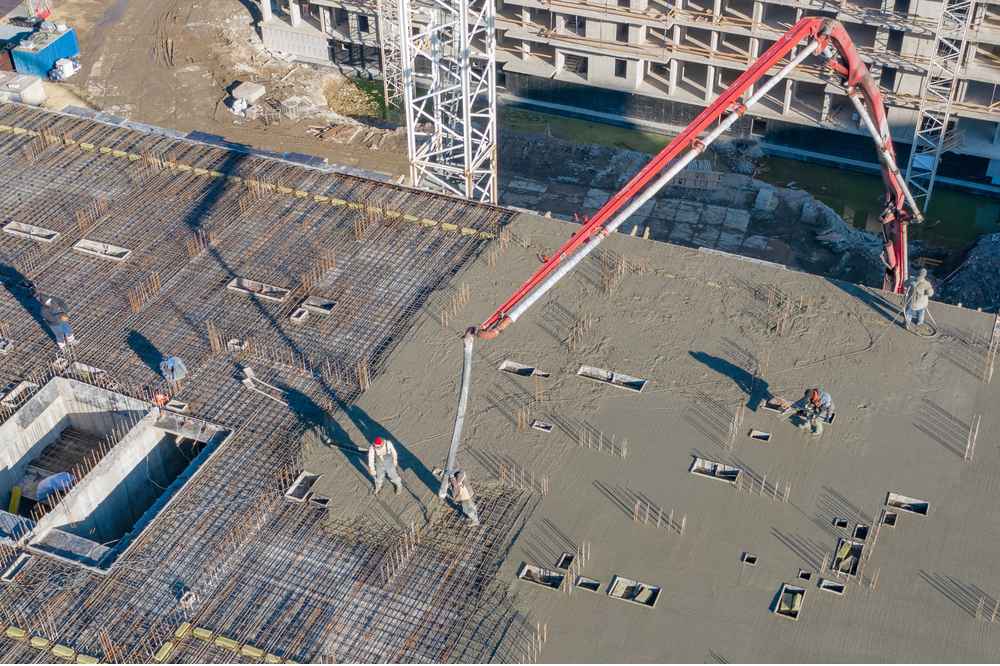A thorough understanding of the construction process is vital to the successful delivery of a construction project. The process of constructing a building is long and complicated, but this guide will summarize the overall building design and construction process into a series of easy-to-follow steps.
The building construction process can be broadly classified into two main phases:
1. Pre-construction
2. Construction

Pre construction
The pre-construction phase consists of activities that must be completed before work begins.
Location selection
The first step in designing and constructing a building is selecting the most suitable land for the project. You need to be very careful in selecting project locations. It is highly dependent on the type of construction of the building. For example, if you have an industrial project, it should be located close to raw materials to save on transportation costs on site.
The size of the site must also be large enough to accommodate the proposed structure.
Or, conversely, you will need to design the structure to suit your terrain.
Other essential factors to consider include road accessibility and public service connections.
Construction projects and planning
After completing the site selection process, the next step is to design the construction plans. You should consult professional architects and engineers to design your building.
These construction projects must include architectural, structural, mechanical, electrical, plumbing, and plumbing plans before construction work begins.
Budget Estimate
The process of constructing buildings is an expensive undertaking. You will need to estimate how much it will cost to complete the project according to the construction plans you have designed.
Consult experienced construction estimators to prepare a bill of quantities (BOQ) for construction works. Estimators will need these initial construction plans to prepare accurate construction budgets. The accuracy of your budget estimate depends on the details you provide to the estimators.
After that, actual financing will have to be secured before the project begins so that it can be completed on time.
Building Permits
The construction process cannot begin without approval from local authorities. You must submit the building plans, soil report and survey report to your local council to obtain building permits. This process can take several weeks, so factor this into your timing.
Contractor selection
Contractor selection is a crucial phase of the project. You will need to select specialized contractors based on the type of construction of the building. This includes checking the contractor's previous experience in delivering similar projects. Always vet potential contractors before awarding them construction work.
When you're ready to move forward, you'll need a professional contract administrator to finalize terms with your contractor. The division of responsibilities between the client and the contractor must be clearly defined before signing the contract.
Construction
Once all the planning, preparation and financing has been taken care of, construction can begin on site.
Excavation
The construction process begins with digging the foundation.
The layout is made according to the plan and the excavation is carried out to the lower level of the foundation.
This can be done quickly and cost-effectively using heavy equipment such as excavators and dumpers. You can rent heavy equipment for excavation work from reputable companies like Rent1 Equipment Rentals.

Substructure
The substructure is the section of the building that is underground. This includes the foundations, slab-on-grade, retaining walls, and basement.
The foundation supports the load of the entire structure. The quality of construction and construction materials used in foundations is extremely essential.
Construction quality is controlled by inspectors at all crucial stages, such as before pouring the concrete foundations.
Superstructure
After the substructure is completed, work on the superstructure is carried out. These are the above-ground structures such as columns, beams and slabs. Modern construction technology and equipment can help complete construction projects more quickly and efficiently.
Equipment used in the superstructure includes machines such as concrete mixers, pumps, tower cranes and mobile cranes. For longer projects, purchasing heavy equipment is often cheaper than renting.

European deputy works
Mechanical, electrical and hydraulic (MEP) works can be carried out simultaneously as a superstructure. Superstructure works must be coordinated with MEP plans to avoid rework.
To ensure quality, all MEP work must be inspected regularly during significant phases of the project.
Finishing Works
The finishing stage is the most important part of a project. These works remain visible throughout the life cycle of the project.
It is essential to ensure the best quality at this stage of the project. The main finishing works are things like:
- Masonry works
- Installation of doors and windows
- Floors
- Electrical and mechanical accessories
- Plumbing Accessories
- Roof
- Cabinets
- To paint
